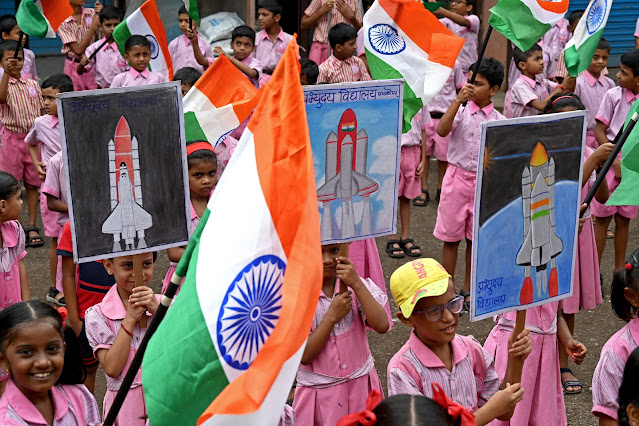Chandrayaan-3: India's Journey Back to the Moon
On October 22, 2008, India launched the Chandrayaan-1 mission, which made a groundbreaking discovery - the presence of water on the Moon. This revelation sparked a renewed interest in lunar exploration worldwide. Since then, several countries, including the USA, China, and Israel, have sent missions to the Moon. However, all eyes are now on India's upcoming Chandrayaan-3 mission. In this blog, we will explore the new discoveries expected from Chandrayaan-3 and delve into the reasons behind the failure of the Chandrayaan-2 mission.
Moon Missions: A Brief Overview:
Moon missions can be categorized into five to six different types, each with its own objectives and complexities. The earliest missions were fly-by missions, where spacecraft passed by the Moon without orbiting it. The first successful fly-by missions were conducted by the Soviet Union and the USA in 1959. Orbiter missions, on the other hand, involve spacecraft orbiting the Moon to study its surface and atmosphere. Impact missions, an extension of orbiter missions, involve crash-landing a part of the spacecraft on the Moon to gather data during the descent. Lander missions aim to achieve a soft landing on the Moon's surface, while rover missions involve deploying small robots to explore the lunar surface. Lastly, human missions involve sending astronauts to the Moon.
Chandrayaan-2 Mission Failure:
The Chandrayaan-2 mission, planned as a rover mission, unfortunately, faced a setback when the Vikram lander crash-landed on September 6, 2019. The failure was attributed to a software glitch, which caused the lander to deviate from its intended path. Despite initial claims that the lander was intact, it was later confirmed that it had crashed and was destroyed. The failure of Chandrayaan-2 was a disappointment, but it provided valuable lessons for future missions.
Chandrayaan-3: The Road to Redemption:
Chandrayaan-3 aims to fulfill the objectives that Chandrayaan-2 could not achieve. Several modifications have been made to minimize the risk of failure. The landing area has been enlarged, allowing for more flexibility in choosing a landing site. The Vikram lander carries more fuel to extend its time above the lunar surface, and software upgrades have been implemented to improve stability. Additionally, the high-resolution images captured by Chandrayaan-2's orbiter have been utilized to select the landing location accurately.
Instruments and Objectives:
Chandrayaan-3 consists of three modules: the Lander Module, the Rover Module, and the Propulsion Module. The Pragyan rover will carry instruments such as LIBS and APXS to analyze the chemical composition of the Moon's soil and stones. The Vikram lander will house instruments like RAMBHA, ChaSTE, Ilsa, and LRA, which will study the Moon's atmosphere, thermal properties, seismic activity, and aid in precise distance calculations, respectively. The propulsion module will be responsible for taking Chandrayaan-3 out of Earth's orbit and into the Moon's orbit.
Expectations and Challenges:
Chandrayaan-3's primary objective is to land on the Moon's south pole, an area believed to contain traces of ice. The mission faces the challenge of completing its scientific experiments within a limited timeframe. The rover will have only one lunar day, equivalent to about one month on Earth, to gather data before the lunar night renders the instruments inoperable due to extreme cold temperatures. Therefore, timing the landing is crucial to maximize the mission's scientific output.
Conclusion:
Chandrayaan-3 represents India's determination to explore the Moon and make significant scientific discoveries. With its upgraded design and modifications, the mission aims to achieve a successful soft landing and conduct valuable experiments. The instruments onboard the lander and rover will provide insights into the Moon's composition, atmosphere, and seismic activity. If successful, Chandrayaan-3 will not only contribute to scientific knowledge but also enhance India's reputation in the field of space exploration. As we eagerly await the mission's launch, we can anticipate exciting new discoveries and advancements in lunar exploration.

